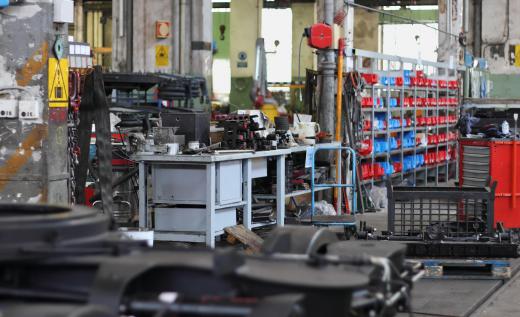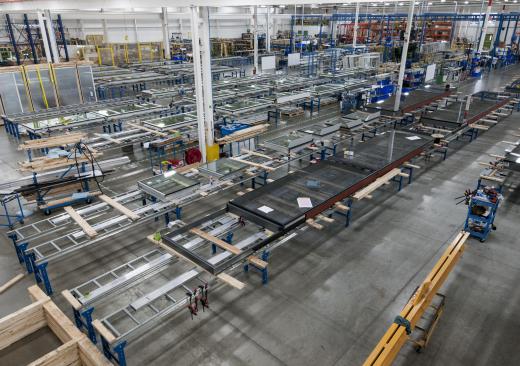A flexible factory is able to manufacture different parts and products, unlike a focused factory that can only make very similar items. Along with having machinery equipped for changes, a flexible factory is able to quickly retool equipment to make different items with little downtime. Being too flexible can be a problem with marketing and focusing workloads, so this factory is typically set up around a theme. While this factory can make many different items, it typically is cheaper for business owners to run, because workers can focus on making items that have a high demand, rather than having a factory that may have extensive downtime.
The common factory, known as a focused factory, is typically able to make very similar parts. For example, if a factory is responsible for making wrenches, then it can make wrenches of different sizes but it still will only make wrenches. A flexible factory is able to make very different items. Instead of just wrenches, this factory also may be able to make screwdrivers, drills, saws and other tools.

Another qualifying aspect for a flexible factory is quick retooling between different items. A focused factory may receive a custom order that is outside their normal range of products, and it may take days to get machines ready. With a flexible factory, the machines are typically set up to allow retooling within a day, if not within minutes or hours. This results in little downtime between equipment reconfigurations.

While flexibility has many advantages, there can be a problem with being too flexible. For example, if a tool factory started making stuffed toys and shelving, then this would require a very broad range of equipment and technicians from many different fields. It also may be difficult for the factory to get workers skilled enough to work on every type of item, and marketing to businesses also may be tough. For this reason, most flexible factories are centered on a theme, such as tools, cars or toys.
Unlike a focused factory, which may have extensive downtime and extra costs associated with making different products, a flexible factory often costs less to run. This is because of varying demand for a product. For example, if one product is in demand and another has a small demand, the flexible factory can be set up to run both items to adequately supply businesses with minimal downtime. If a business owns two focused factories and one is responsible for making the less popular item, then the low quantity of work may leave employees sitting around waiting for the next order, resulting in extra costs and high downtime.
